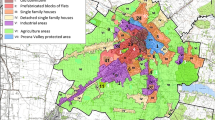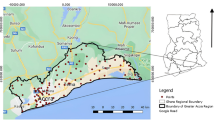Abstract
The preliminary results of indoor radon concentration measurements taken in some of Mexico City’s colonial churches and convents are presented. Measurements were taken in the churches of Santa Catarina, La Conchita, San Juan Bautista, San Antonio Panzacola, San Diego and San Mateo and the church and convent complex of El Carmen. These structures are all located in Coyoacan, a borough of Mexico City. Indoor radon concentrations in churches and convents constructed in the 17th and 18th centuries are interesting for several reasons. Most of these buildings were built using the stones of ancient Mexican pyramids, mainly blocks of basalt and volcanic pyroclastic rocks, and possess walls between 40 cm and 70 cm thick and naves with large volumes of air and relative low ventilation. The churches are public places with people most of the time. The indoor radon concentrations were measured using nuclear track detectors consisting of a closed-end cup containing CR-39 Lantrack® polymer as detector material. The measurements were taken over four periods of three consecutive months. The results show indoor radon concentrations of between 82 and 165 Bq·m−3, below to the United States Environmental Protection Agency (USEPA) indoor radon action level for workplaces. Using these results, the radiological risks were calculated and found to be negligible.
Similar content being viewed by others
References
ICRP-65, Protection against radon-222 at home and work, Annals of the ICRP, 23 (1993) No. 2.
H. Al-Mustafa, M. I. Al-Jarallah, Fazal-Ur-Rehman, F. Abu-Jarad, Radiation Measurements, 40 (2005) 707.
G. Espinosa, R. B. Gammage, Radiat. Prot. Dosim., 59 (1995) 145.
L. Gaidolfi, M. R. Malisan, S. Bucci, M. Cappai, M. Bonami, L. Verdi, F. Bochicchio, Radiat. Prot. Dosim., 78 (1998) 73.
C. Orlando, P. Orlano, L. Patrizii, L. Tommasino, S. Tommasino, S. Tonaren, R. Trabéis, P. Viola, Radiat. Prot. Dosis, 102 (2002) 163.
G. Espinosa, Trazas Nucleares en Sólidos, Instituto de Física, Universidad Nacional Autónoma de México, ISBN-968-36-4219-5 (1994).
G. Espinosa, R. B. Gammage, Appl. Radiation Isotopes, 44 (1993) 719.
R. B. Gammage, G. Espinosa, Radiat. Meas., 28 (1997) 835.
Commission Recommendation of February 21th, 1990 on the protection of the public against indoor exposure to radon. D.O.C.E. no L 080 de 27/03/1990, 90/143/EURATOM.
T. Martínez, J. Lartigue, M. Navarrete, I. Cabrera, P. Gonzalez, A. Ramirez, V. Elizarraras, J. Radioanal. Nucl. Chem., 236 (1998) 231.
UNSCEAR, Sources and effects of ionizing radiation. United Nations, New York (2000).
Author information
Authors and Affiliations
Corresponding author
Rights and permissions
About this article
Cite this article
Espinosa, G., Golzarri, J.I., Angeles, A. et al. Radon concentration levels in 16th and 17th century’s churches and convents. J Radioanal Nucl Chem 280, 415–418 (2009). https://doi.org/10.1007/s10967-009-0537-1
Received:
Published:
Issue Date:
DOI: https://doi.org/10.1007/s10967-009-0537-1




